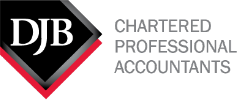Background
Historically, Professional Corporations (PCs) have been used by professionals as a vehicle to enjoy significant tax advantages, particularly through the deferral of personal taxes. By incorporating their practices, professionals are able to earn income within the corporation and take advantage of lower corporate tax rates on retained earnings. This structure is only available to individuals in regulated professions, such as accountants, lawyers, and doctors, among others. With the support of trusted advisors, professionals are able to implement tailored tax planning strategies to minimize their tax liabilities and achieve their cash flow objectives.
Benefits of Using a Professional Corporation
Deferral of Personal Tax
One of the primary benefits for professionals to incorporate is the ability to take advantage of the lower corporate tax rates compared to the higher personal income tax rates on active business income. By retaining a portion of their professional earnings within the corporation, professionals can defer paying personal tax on their earnings until a later date when the funds are withdrawn from the corporation as dividends.
Income that is taxed in the PC may be eligible for the small business deduction and be taxed at the lower corporate rate. Income above that threshold will be taxed at the general corporate rate, which is still significantly lower than the higher marginal personal tax rates.
The Small Business Deduction (SBD) applies to active business income (income earned from professional activities) under $500,000 and is taxed at a combined federal and provincial rate of 12.2% in Ontario (2024). This provides for a tax deferral on profits left in the corporation versus unincorporated professionals earning the same income and paying personal tax on the entire amount.
Lifetime Capital Gains Exemption
The Lifetime Capital Gains Exemption “LCGE) is an invaluable tax and estate planning tool and can be utilized on the sale of shares or the death of the shareholder. If the shares of the PC meet certain criteria, this exemption provides the ability to shelter a significant portion, if not all of the capital gains on the sale of the shares or the deemed disposal of the shares on death. To qualify for this exemption, the shares must be held for certain periods of time and no significant non-business assets can accumulate. Tax planning can be done to ensure that the PC shares qualify for this exemption. There is no similar deduction for unincorporated practices. This is primarily a benefit to professionals with saleable practices.
Income Splitting
While the opportunity to split income among family members, such as spouses and children, through a PC is still available, it has become more restrictive with the passing of the “tax on split income” or TOSI rules in 2018. These rules stipulate certain conditions that must be met by the family members receiving dividends from the PC or via a family trust. If these conditions are not met, the individual will be taxed at the highest personal rate on the income received from the PC. The main eligibility criteria is that the family member being compensated must be actively engaged in the business on a “regular, continuous, and substantial basis” in either the current or preceding five years. Guidance has been provided to indicate that an average of 20 hours a week will satisfy this criterion. Additionally, once the professional is 65 or over, the PC is able to pay dividends to the spouse of the shareholder without the TOSI rules applying. There are other limited circumstances where TOSI rules are not applied.
Limited Liability
Since a corporation is a separate legal entity, a PC provides limited liability to its shareholder, similar to other corporations. This offers the professional protection of their personal assets if the PC faces any financial difficulties. It provides them with creditor protection, as creditors can only go after the assets of the corporation and not the personal assets of the professional (shareholder). However, the limited liability protection applies primarily to the business operations and the corporation’s debts and liabilities, not the professional responsibilities of the shareholder. Professionals can still be held personally liable for any malpractice or negligence.
Flexibility in Remuneration Planning
A PC provides professionals flexibility in their remuneration planning. Depending on their financial goals and needs, they can take a salary, or a dividend, or a combination of both. Working with a tax professional, enables individuals to optimize their tax planning and helps them achieve their specific financial goals, such as managing cash flow, retirement planning, or reducing personal tax liabilities. For instance, many professionals will take a sufficient salary to generate contribution room and contribute to their RRSP, enabling them to maximize their retirement savings while minimizing their personal taxable income.
Disadvantages of Using a Professional Corporation
Sharing the Small Business Deduction (SBD)
When a professional corporation is part of a partnership, this advantage could be reduced or lost if income of the partnership is greater than the $500,000 limit because all corporate partners must share the $500,000 SBD.
Restriction on Business Activities
While there are limitations on the ability of a professional corporation to use accumulated wealth in other revenue generating activities, they can invest retained earnings inside their PC as long as these activities are considered ancillary to the practice of the professional. Rules vary by professional regulation boards, so it is important to consult federal and provincial regulations specific to the profession before any investments are undertaken in the PC. A further caveat is that the SBD does not apply to investment income, and it is taxed at the highest corporate rate which is only slightly lower than the highest personal rate; however, there is an opportunity to receive a portion of that tax back once dividends are paid out to the shareholder. Additional consideration is needed, if planning to claim the Lifetime Capital Gains Exemption (LCGE). The PC will need to ensure investments are not significant enough to prevent it from qualifying. It is important to consult a tax advisor for any additional tax planning needed to meet the eligibility criteria in a tax-efficient manner. There are alternative structures and tax planning opportunities available for PC’s looking to invest surplus funds.
Additionally, when earning significant passive income, the SBD can be reduced. Specifically for every $1 of passive income earned above the $50,000 threshold, then $5 of the SBD is clawed back for the PC and any associated corporations. Once the passive income is greater than $150,000, the SBD is eliminated.
Additional Costs and Compliance
There are additional costs incurred when a professional incorporates instead of operating as a sole proprietor or as part of a partnership. Among these costs are the legal fees to incorporate and maintain corporate records, and accounting fees related to annual compliance and filing requirements such as financial statements, corporate tax returns, T5 slips for any dividends paid, and T4 slips and returns for salaries. These additional reporting requirements can be both cumbersome and costly to the professional.
A PC must also comply with both federal and provincial regulations specific to their profession which could result in extra paperwork related to regulatory approvals, and adherence to specific operational guidelines.
Proposed Changes to Capital Gains Inclusion Rate and Why it Matters
As part of the 2024 Canadian federal budget, the government proposed to increase the inclusion rate on capital gains above $250,000 for individuals and on all capital gains by corporations and trusts from one-half to two-thirds. This proposed change will apply to capital gains incurred on or after June 25, 2024.
While these proposed changes have not yet been passed into law, it is important to consider the impact they will have on PC’s. Traditionally, PCs were an attractive tax planning tool due to the deferral of personal tax; however, some of this advantage is lost with the proposed increase to the capital gains inclusion rate if the PC holds certain investments.
Historically, the tax system in Canada has relied on the concept of integration. The concept of tax integration ensures that whether the taxpayer earns the income as an individual or by way of dividends through a corporation, the total income tax paid is similar. However, under the proposed legislation, individuals will benefit from the lower inclusion rate of one half on their first $250,000 of capital gains. Corporations and trusts do not have this carved out and will have an inclusion rate of two-thirds on all capital gains incurred. This presents an issue to integration and could result in higher taxes paid overall on certain income if it is earned in the PC first and then distributed as a dividend to the shareholder. It reduces the advantage of deferring personal tax when paying tax in the PC at a higher rate. This change to the inclusion rate could impact how professionals invest through their PC or structure any associated corporations.
Takeaway
While a PC may still offer valuable benefits, such as the deferral of tax via lower corporate tax rates on active income; the proposed capital gains inclusion rates does reduce some of the tax advantages of this structure. Strategic tax planning is essential to help mitigate the impacts of the proposed new capital gains inclusion rate.
For more detailed advice on whether a professional corporation is right for you or how to adapt your tax planning in light of the recent changes, please contact one of our trusted advisors.










